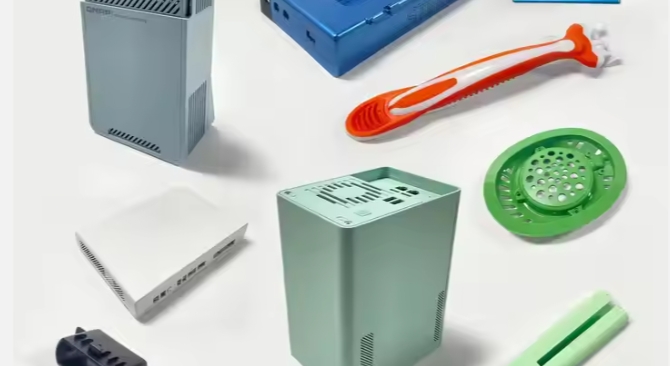In the IoT era, Wi-Fi modules act as the “neural network” of smart devices, where housing precision directly impacts signal transmission efficiency and reliability. This article analyzes how injection molding technology addressed industry challenges through a mass production case of a smart home Wi-Fi repeater housing.

Project Background
The client required micro-housings (1.2mm thickness) for Wi-Fi repeaters with:
- 5G signal penetration loss rate <15%
- High/low-temperature resistance (-20℃~85℃ cyclic testing)
- Matte fingerprint-resistant surface
- Monthly capacity of 200,000 units
Key Technological Breakthroughs
1. Material Innovation
Developed Material Anti-scratch Pc using twin-screw compounding modification technology, achieving 93% fill rate in 0.08mm thin-wall areas. Signal attenuation reduced by 42% compared to traditional ABS.
2. Precision Mold Engineering
- 16-cavity hot runner mold with ±0.5℃ temperature control
- Mirror-finish EDM machining (surface roughness Ra0.012μm)
- Silicon nitride ceramic ejector pins eliminated thin-wall deformation
3. Process Optimization
Moldflow simulation established digital twin models to determine optimal parameters:
- Melt temperature: 325±5℃
- Injection pressure: 185MPa
- V/P switchover: 98.7% cavity fill
- 3-stage gradient pressure-holding

Mass Production Solutions
- Smart Monitoring System
Integrated in-mold pressure sensors + IR thermal imaging enabled 0.1s automatic parameter compensation. - Cleanroom Management
Class 10,000 cleanroom maintained electrostatic levels <50V to prevent signal interference. - Automated Post-Processing
Robotic handling → AOI inspection → plasma activation → nano-coating spray boosted yield to 99.6%.

Results & Value
- Performance: 13.8% signal loss at 5GHz (28% better than industry standards)
- Efficiency: 11.8s cycle time, daily output reaching 8,000 units
- Sustainability: 43% energy saving via servo systems, 0.3% material waste
- Market Impact: Enabled 45-day earlier product launch for smart home market penetration
Industry Insights
This kevorapid case demonstrates that injection molding has evolved from structural manufacturing to functional integration in smart hardware miniaturization. The triad of material science, precision tooling, and smart manufacturing is redefining IoT device capabilities. As millimeter-wave communication emerges, R&D in dielectric-tunable specialty engineering plastics will become the next frontier.